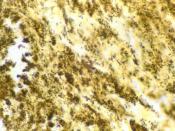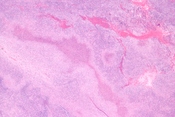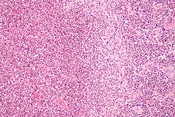Cat-Scratch Disease (CSD)
Cat-scratch disease can also be known as cat-scratch fever or CSD. It's incubation period is between 1 and 2 weeks. Symptoms of the classic CSD range from mild to severe. In 50 percent to 90 percent of cases, a 0.5 to 1-cm brownish papule or pustule forms at the site of the scratch or bite from the cat and is considered an indicator of CSD. Regional lymphadenopathy follows in 3 to 10 days, often accompanied by malaise, fever, and anorexia. Mild fever and malaise occur in less than half of the patients. Generally, the lymph nodes are 1 to 5 cm in diameter and proximal to the site of B. henselae inoculation. The nodes that are most commonly involved are in the axillary, epitrochlear, cervical, and supraclavicular areas. Submandibular and preauricular lymphadenopathy involvment is less common. Over a period of weeks or months, lymph nodes may become suppurative or fluctuant or may spontaneously regress.
Full resolution occurs suppurative or within 1 month, with or without treatment. Lymph nodes show hyperplasia, granuloma formation, and suppuration (in about 1/3 of the cases).
There are around 22,000 cases per year; Incidence equals 6.6 cases per 100,000 people.
During 1993 and 1994 an average of 87 laboratory-confirmed cases of CSD occurred in Texas. This figure is higher than the Texas averages for any other reportable zoonotic disease is transmitted by arthropod bite or by direct inoculation. Texas surveillance data suggests that CSD is more common than ehrlichiosis, plague, relapsing fever, Rocky Mountain spotted fever, St Louis encephalitis, and tularemia combined.
Cases generally are pediatric infections associated with a history of scratches from or contact with a cat. 80-90% of the cases are in patient under 21 years old.
The organism infects kittens and can remain in their blood stream for...


